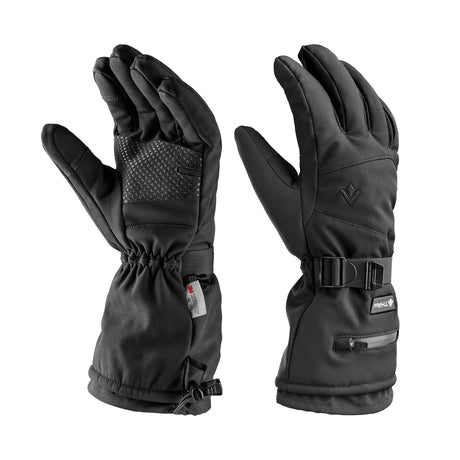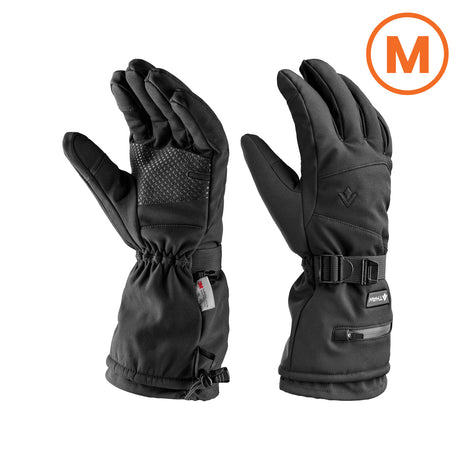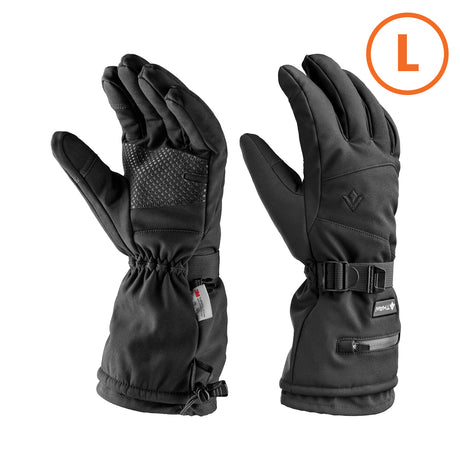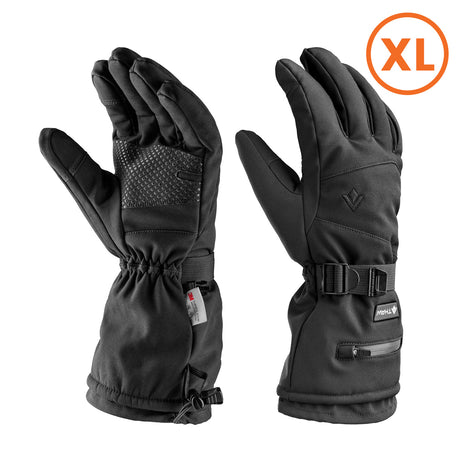What is a Lithium metal cell?
A lithium metal cell is a non-rechargeable cell which uses lithium metal, or a lithium compound, as the anode in the cell. The most common type of lithium metal cell used in consumer applications uses metallic lithium as anode and manganese dioxide as cathode, with a salt of lithium dissolved in an organic solvent.
The lithium metal cells that Torch Direct supply are very high quality, made by Panasonic or Duracell and have in-built thermal protection, the output voltage of these cells is 3 V.
What is a Lithium-ion cell?
A lithium-ion cell (also known as a Li-ion cell or battery) is a member of a family of rechargeable battery types in which lithium ions move from the negative electrode to the positive electrode during discharge and back when charging. Lithium-ion cells use an intercalated lithium compound as the electrode material, compared to the metallic lithium used in a non-rechargeable lithium metal battery.
The lithium-ion cells that Torch Direct supply are high quality "protected cells" and have a nominal voltage of 3.6/3.7 V and are charged at approximately 4.2 V per cell.
What type of cell should I use, and what do the specifications mean?
Primary Cells
Lithium metal cells are disposable (non-rechargeable) and known as 'primary'. NEVER attempt to recharge a primary cell!
Primary lithium metal cells are nominally 3 V, and have several features that make them a good choice for certain applications. They have a long shelf life, meaning they can be stored for up to 10 years and still work well. Primary cells will also operate down to much lower temperatures and higher temperatures than rechargeable cells, typically -40°C to +85°C. The most common primary lithium metal cell is the CR123A thanks to its widespread use in photographic equipment.
The main disadvantages of primary cells are that they are relatively expensive to buy and cannot deliver very high currents.
Lithium-ion rechargeable cells
Rechargeable lithium ion cells (or li-ion) provide the user with another option, and many advantages over primary cells. Higher power output (higher current and voltage), higher capacity and cheap to use (more expensive to buy, but the cost per charge cycle is much lower). They cannot be used at extremes of temperature, and require some care in their use, but otherwise provide excellent performance for most users.
Rechargeable lithium-ion cells can be one of several different chemistries, each of which has different characteristics. These are, starting with the most common, ICR (LiCoO2) charged to 4.2 V, IMR (LiMn) also charged to 4.2 V, and IFR (LiFePO4), which is the exception, being charged to only 3.6 V.
Lithium-ion protected cells
Due to the specific requirements of the lithium-ion rechargeable cell with regard to safety and operating conditions, most lithium-ion cells come fitted with protection circuits. Torch Direct only supply 'protected' cells.
The protection circuit stops the cell being damage by limiting the minimum and maximum cell voltage (over-discharge and over-charge protection), and maximum current draw/short circuit protection. Unprotected cells can provide slightly better performance, but you need to carefully monitor the cells yourself and ensure you use the bare cells safely. Protection takes the guesswork out of li-ion safety and helps prevent accidents.
Lithium metal and lithium-ion general precautions
Always use batteries of the same type, capacity and brand. Never mix primary batteries (lithium metal non-rechargeable cells) with rechargeable batteries (lithium-ion cells). Do not combine full capacity/charged batteries and empty/uncharged batteries together in the same torch or device.
Lithium-ion cell sizes
The most common lithium-ion cell is the 18650 (the numbers define the physical dimensions and shape as follows: 18mm in diameter, 65mm long and the 0 means it has a round cross-section) which is due to its widespread use in laptop battery packs. As it happens, a single 18650 is a good size for a torch being similar in size to two lithium metal CR123A cells but having more stored energy.
Other common sizes are the 16340 (also known as RCR123), the 14500 (AA size but 4.2 V), 17670 (frequently used instead of to two CR123A cells), and 10440 (AAA size but 4.2 V).
When looking for a suitable cell, the first factor you need to consider is choosing the right size. Consult the instructions of the torch you want to use and check what it can use. For example a torch might commonly be able to use 1 x 18650 (rechargeable li-ion 4.2 V) or 2 x CR123A (primary 3.0 V), but be careful as if it states this, you cannot use 2 x RCR123 (as this gives 8.4 V), so your only choice of rechargeable li-ion in this instance is 1 x 18650.
Lithium-ion cell specifications and what these mean for you
'Nominal Voltage', 'Capacity / mAh', 'Energy / Wh', 'Power / W', chemistry, maximum charge/discharge rate 'C-rate', flat-top, button-top, protection, self-discharge, ageing and internal resistance; All of these are a li-ion cell's vital statistics, but the reality is that in most instances they will not be something you need to worry too much about.
Let's run through these one by one:
Nominal Voltage: To calculate the nominal voltage, we take a fully charged cell that measures 4.20 V and then fully discharge it to 3 V at a rate of 0.5C while plotting the average voltage. For the cells that we supply, the average voltage comes to 3.6 V/cell.
Protection: If you are reading this guide, buy protected cells. Protection reduces the cell's exposure to potentially damaging conditions (so therefore you too). However, you should consider cell protection to be an added safety feature and not a replacement for careful and responsible cell use. It is only a safety net, and safety nets can fail too.
Flat-top/Button top: For best compatibility choose button top cells. This is the type where there is a short metal post protruding from the positive terminal (just as you see on normal AA cells). Flat top cells do not have this protrusion and the positive and negative terminals of the cell can look very similar.
Capacity / mAh (milliampere hours): Refers to how much charge a cell holds. It literally refers to the cell being theoretically able to provide, for example, 3400 mA for one hour (or 1700 mA for 2 hours etc). The higher the number the longer the cell will power the light for. For example a common 18650 will be 2600 mAh, but a newer design may be 3400 mAh. The 3400 mAh cell will be able to run the light for around 30% longer.
Power / W (Watts): This is the work rate the cell is capable of, and is derived from the Voltage x Current. Cells are not usually specified based on power as this varies over the discharge cycle.
Energy / Wh (Watt hours): Energy can be expressed as Power expended over a one hour period using Wh. Previously rarely quoted, this is now part of the UN38.3 criteria for li-ion cells, so is increasingly being included in the cell specification. This is a better indication of stored energy than the capacity of a cell.
Chemistry: ICR is the most common type and is the 'normal' li-ion chemistry. IMR is often called the 'safe' li-ion chemistry as it is far more resilient to over-discharge, and can support very high current draw thanks to its low internal resistance. IMR is generally not protected due to its 'safe' chemistry, but it has far lower capacities compared to ICR cells. IFR or LiFePO4 is a special lower nominal voltage li-ion which requires different chargers and is far less common.
C-rate (or Charge rate): Is used to express the charge or discharge current (in 'C') relative to the cell's capacity (in Ah). A rate of 1C refers to a charge or discharge current equal to the Ah rating of the cell, so for a 3400 mAh cell, a C-rate of 1C is a current of 3400 mA or 3.4 A. The current in amps represented by 1C is specific to each cell, so 1C for a 2600 mAh cell is 2.6 A and for a 3400 mAh cell is 3.4 A. C can be expressed as a multiple or fraction of 1C. For a 3400 mAh cell, 1C = 3.4 A, 2C = 6.8 A, 3C = 10.2 A etc. and similarly C/2 or 0.5C = 1.7 A, C/5 or 0.2C = 0.68 A, C/10 or 0.1C = 0.34 A etc. A general rule of thumb for li-ion cells is a maximum 2C for discharge and 0.5C-1C for charging, but you should check this for the cells you buy.
Self-Discharge: All cells gradually loose power, this is normal and is referred to as self-discharge. Think of this like a bucket of water with a small hole in it, slowly leaking water. If you use the cell quickly after charging it, you will get almost all of its capacity, but if you leave it for a long time, you might even find it is empty. Typically li-ion cells lose 5% in the first 24 hours, then 1-2% per month if stored at 21°C. Protection circuits add to the self-discharge rate by around 3% per month. Self-discharge increase substantially with temperature, doubling for every 10°C higher temperature.
Cell Ageing: Lithium-ion cells degrade over time. This degrading results in the capacity becoming reduced, and is caused by cell ageing. Cells age simply through normal use, but ageing is also affected by the conditions of storage. Cells have a limited lifespan of 300-500 cycles (a cycle being one theoretical full discharge and charge) after which their capacity becomes reduced to the point of being unusable. Depending on the level of discharge, the number of theoretical cycles the cell can provide changes. For example a cell taken to 100% depth of discharge (DoD) should last for 300-500 cycles, but a cell taken to only 50% DoD will be able to provide 1200-1500 cycles. Cell ageing is increased by high DoD, storage and usage at high temperatures, and if the cell is stored at a high state of charge.
Charging lithium-ion cells
Incorrect charging can result in anything from simply shortening the lifespan, to hazards such as fire or even exploding cells, so it is vital that you use the correct type of charger for the rechargeable cells. There are many different chargers varying features and charge rates. For your own safety, you should follow the instructions included with the charger with regard to suitable cell sizes and charge rates. If cells are in regular use, then it is not really worth worrying too much about state of charge, and just store them fully charged and ready to go, however if the cells are to be stored for longer periods and are not used regularly, then you can reduce cell degradation by storing them only partially charged. Cells should also be charged at room temperature or cooler (but not in a freezer). Avoid cheap no-name chargers and only use approved chargers from trusted brands such as those sold by Torch Direct and you won't go wrong.
Using lithium-ion cells
When using li-ion cells it is important that you consider the factors mentioned previously about cell ageing and proper charging. In addition to that you also need to understand that when operating lights that use multiple cells, this requires additional preparation and considerations.
Single cell lights are the simplest to power and you can use any cell regardless of state of charge. However, if you move into the realms of multi-cell lights, you need to be aware of cell configuration (Series or Parallel) and cell matching/balancing (state of charge and capacity).
Cell configuration is specified using a convention to clearly show how the cells are connected. Take a light that uses four cells, these could be connected in many different ways. 4S – all four cells in series (4.2 V x 4 = 16.8 V ; 3400 mAh x 1 = 3400 mAh), 4P – all four cells in parallel (4.2 V x 1 = 4.2 V ; 3400 mAh x 4 = 13600 mAh), 2S2P – two sets of '2 cells in series' in parallel (4.2 V x 2 = 8.4 V ; 3400 mAh x 2 = 6800 mAh). The 'P' multiplies the capacity, and the 'S' multiplies the Voltage.
The critical factor is that multiple cells need to work together, so when used in series, cells must be matched in capacity and voltage/state of charge. If this is not done one cell will become depleted first and may be 'reverse-charged' if the protection fails. When used in parallel, cells can be of mixed capacity, but must be at the same starting voltage/state of charge. The simplest rule to follow if using multiple cells is to ensure they are the same age, brand, capacity, condition and state of charge, and never mix cells you are not sure about.
Lithium metal and lithium-ion cell handling precautions
Primary lithium cells contain lithium metal, as well as stored electrical charge, so must be kept away from water. Lithium metal is extremely hazardous and burns when in contact with water. Both lithium metal and lithium-ion cells must be considered fragile and should never be crushed, exposed to flames or excessive heat. They can become damaged if dropped and may leak or suffer from 'thermal runaway' if the damage creates and internal short circuit. Never use damaged cells.
Storage of lithium metal and lithium-ion cells
There are a few aspects that need to be considered when storing cells, that of short circuit prevention, cell degradation, and self-discharge. When carrying cells, if you were to place them loose in a pocket containing coins or keys, there is a high probability of the coins or keys creating a short circuit. It is far better to carry cells in insulating containers that are designed for this purpose.
Transportation rules
Following a number of incidents which have occurred with lithium metal and lithium-ion cells in transit, there are now many restrictions in place regarding transporting these types of cell. For example if travelling by air, please check with your agent or airline prior to departure and check current regulations. We follow all of the rules set by the Royal Mail or couriers that we use, packages are packed in accordance with current legislation. If you need to send back cells to us, then please contact us prior to shipping them, it is your responsibility to ensure that items are sent in accordance with the rules, we can advise on this.



















